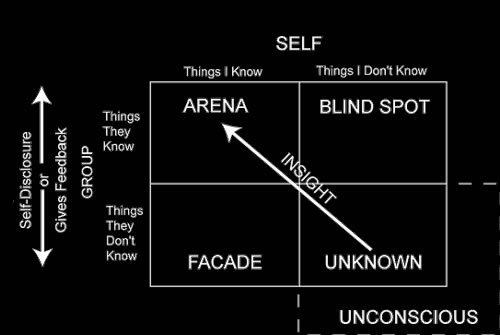Bradford VTS Online Resources:
Teaching & Learning
Learning Needs
DOWNLOADS
path: LEARNING NEEDS
What does 'learning needs' actually mean?
Learning needs is the gap between the learner’s current level of knowledge and skills, and the level of knowledge and skills required to perform a task or a set of tasks. The actual needs differ, as do the methods employed to meet those needs.
- needs assessment has been conducted,
- the education is linked to practice,
- personal incentive drives the educational effort,
- and there is some reinforcement of the learning.
Learning needs assessment is thus crucial in the educational process. They are a key step in the learning cycle. It is worthwhile spending time doing a thorough learning needs assessment – after all, it is what will drive the learning process during the trainee’s attachment. There are formal and informal ways of identifying your learning needs which are available in the Downloads section above.
Perceived vs Real Learning Needs
Learning needs can be categorised as either perceived or real. Trainees and teachers may have perceived needs about attitudes and competencies that a trainee is expected to learn. Real learning needs are the ones that have been decided through the direction of a syllabus, school, or licensing corporation. But be careful – there can be a mismatch in learning needs between trainees and teachers or faculties/educational establishments.
JoHari's Window
The Johari window is a technique that helps people better understand their relationship with themselves and others. It was created by psychologists Joseph Luft (1916–2014) and Harrington Ingham (1916–1995) in 1955, and is used primarily in self-help groups and corporate settings as a heuristic exercise. HOWEVER, it is also a valuable tool for understanding where an individual’s learning needs might be identified from.

The arena – this is where there are things the trainee knows they are bad at and others like the trainer also knows they are bad at. For instance, one trainee might be really bad at family planning and the trainee knows it (because they did not do an O&G job and they know they find this area pretty difficult). The trainer also knows it perhaps because other doctors in the practice may have mentioned something or the trainer may have seen patients previously seen by the trainee with family planning issues which were not managed very well. The point is this: learning needs in the arena box are relatively easy to identify: both the trainee and the trainer know the trainee is bad at xxxx and that it needs to be tackled. It’s in the arena box (where both trainer and trainee are aware of learning needs) that you want to end up in if you’re in any of the other boxes.
The facade – this is where the trainee knows their bad at something but the trainer doesn’t. For instance, a trainee might know within themselves (through dealing with patients) that they’re pretty rubbish at dealing with the menopause and HRT. The trainer might not know this because there has been no reason to be concerned – no one’s complained etc.
How to move to the arena: In this situation, it’s important to create an honest, open and safe educational environment so that the trainee can share these needs with you. In that way, you’ll get the trainee to reveal learning needs that are ‘real’ and needed. At the end, instead of just the trainee knowing about this learning need, both you and the trainee will know: hence you’ve moved to the arena box.
The blind spot – this is where the trainee doesn’t realise their rubbish at something but the trainer does. So, a trainee might have done a quick ‘read up’ on say depression and doesn’t feel to have any difficulty with handling and managing depressed patients. But the trainer might have been told by other docs or may have seen these patients him/herself and realised that there is more that should have been done.
How to move to the arena: Again, if you create an honest, open and safe educational environment you should be able to feed this back to the trainee without any confrontation so you can then both decide on how to tackle this newly found aim/objective.
The unknown – this is the most difficult bit to tackle and explain. This is where the trainee doesn’t realise they’re not particularly good at something and you as the trainer don’t know either.
How to move to the arena: Okay, so I hear you ask ‘how on Earth do we figure out their learning needs if no-one knows?’. Throughout training you will both have flashes of insight into some learning needs not previously known. As facilitators, you might achieve this through helping the learner to question their ideas by challenging them, reflecting, giving feedback, etc. This helps them to become aware of areas or gaps of ignorance, and stimulates them to develop new understandings. Alternatively it might be through various tools (like random case analyses, significant event analyses and complaints). Once ‘discovered’, they then become part of the ‘arena’ (i.e. you both now know what the trainee doesn’t know) and you can then start to tackle them.
The RAM approach to identifying and working on learning needs
Believe it or not, this approach is NOT named after me (no matter how much I wish it was). In fact, it has been developed by the Chartered Institute for Personnel and Development (CIPD). Although it was originally devised as an approach to focus analysis on key business outcomes, there is no reason why it cannot be used in the GP training world. It suggests that when we try and tease out learning needs, we remember 3 things…
- Relevance – what relevance does the learning need identified to the learner’s current role in the current workplace.
- Alignment – how does that learning need fit in with the organisation’s higher goals? In the case of GP trainees, how does the learning need identified fit in or align to the GP Training programme? For example, does it cover a curriculum need? Perhaps it will help with the AKT or CSA. Or some other element for which evidence is required for completion of training.
- Measurement – how will the learner measure or evaluate the learning in terms of expected change and improvement?
In this video, the presenter talks about some interesting things about learning and neurplasticity. She then goes on to talk about learning needs assessment in the context of a work organisation. However, the same principles apply if you replace the work organisation with the “GP Training System”.
Examples of learning needs
- Knowledge– doesn’t just have to be clinical knowledge. Could be knowledge about communication skills for instance.
- Skills – doesn’t just have to be about clinical examination or procedural skills. Could be IT skills, communication skills, complaint/conflict handling skills, problem-solving skills and lots more.
- Attitudinal shifts and Attitudinal Learning – re-examining our values and beliefs. What behaviours does the individual need to change? What do they need to stop doing? What do they need to start doing or do more of? How can they provide evidence that this has happened later on?
Ways in which you can identify your learning needs
Adapted from The Good CPD Guide by Grant et al (1999)
- “Blind spots” from a review of the curriculum
- Clinically generated unknowns
- PUNs (patient unmet needs) and DENs (doctor’s educational needs)
- Competence standards
- Diaries
- Difficulties arising in practice
- Innovations in practice
- Mistakes
- Other disciplines
- Patients’ complaints and feedback
- Necropsies and the clinico-pathological conference
- Reflection on practical experience
- Clinical meetings—department and grand rounds
- Department business plan
- Department educational meetings
- External recruitment
- Mentoring
- Audit
- Morbidity patterns
- Mortality review meetings
- Significant Untoward Events (i.e. patient adverse events)
- Patient satisfaction surveys
- Risk assessment
- Clinical incident surveys
- Gap analysis
- Objective tests of knowledge and skill
- Observation
- Revalidation systems
- Self assessment
- Video assessment of performance
- Informal—of the individual doctor
- Formal – multisource feedback for example
- Academic activities
- Attendance at conferences
- Reflection from International visits
- Journal articles
- Medicolegal cases
- Hot Topics in the Press and media
- Professional conversations
- Research
- Teaching

